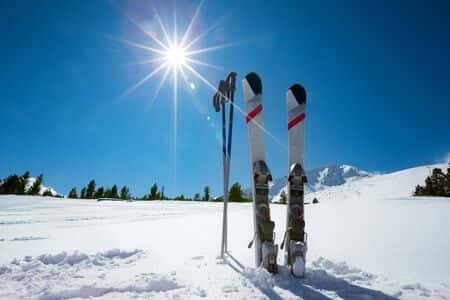Skiier Suffers Paralysis After Accident in Terrain Park
Updated on
This case involves a recreational, novice skier who was injured while skiing one afternoon in the terrain park at a ski resort. The plaintiff, a twenty-two-year-old male, was skiing at a large resort. The resort featured over forty-five trails, multiple terrain parks, and a large halfpipe. The plaintiff was skiing down an intermediate hill with a group of friends when they entered the terrain park. The only marking for this particular section of the resort was a sign, which plaintiff alleged was covered in snow at the time of the accident, indicating that the area was a terrain park, complete with jumps, boxes, and rails. The plaintiff, while skiing down the trail, inadvertently skied off of an unmarked jump and landed improperly on his head. Because of the fall, the plaintiff was severely injured and was left paralyzed from the waist down.
Question(s) For Expert Witness
1. What warnings does a ski resort have to provide its patrons (especially if there is a specialty area, like a terrain park or a halfpipe)?
Expert Witness Response
 In recent years, the extreme sport of skiing has evolved tremendously, resulting in new, unforeseen risks. Up until the 1970s, the legal standard for the ski industry meant that skiers would assume the risks associated with the sport. Currently, skiers sign liability waivers, and the back of a lift pass will contain fine print which releases ski resorts from responsibility for the sports’ inherent risks. With that, however, there is a certain amount of responsibility that ski resorts bear when it comes to the inherent risks of the sport. Ski resorts are responsible for warning their patrons of the dangers that may result from participating in the sport. Furthermore, they must properly label the terrain with appropriate markings and signs in order to warn skiers of the terrain ahead. In the case at hand, the actual warnings on the ski ticket and any other information provided to skiers at the resort in question will illustrate whether they fulfilled their duties. Also, the warning signs at other dangerous areas of the resort should be examined (namely, at the beginning of the more difficult slopes and at the other terrain park). Lastly, the exact sign at the beginning of the terrain park in question should be analyzed, and if it is susceptible to being covered in snow (a likely scenario at a ski resort), the resort should have taken measures to ensure that the warning sign was visible. I have over forty-one years of experience working in both the safety and administrative areas of multiple ski resorts, and based on the preliminary facts presented, the ski resort may be liable.
In recent years, the extreme sport of skiing has evolved tremendously, resulting in new, unforeseen risks. Up until the 1970s, the legal standard for the ski industry meant that skiers would assume the risks associated with the sport. Currently, skiers sign liability waivers, and the back of a lift pass will contain fine print which releases ski resorts from responsibility for the sports’ inherent risks. With that, however, there is a certain amount of responsibility that ski resorts bear when it comes to the inherent risks of the sport. Ski resorts are responsible for warning their patrons of the dangers that may result from participating in the sport. Furthermore, they must properly label the terrain with appropriate markings and signs in order to warn skiers of the terrain ahead. In the case at hand, the actual warnings on the ski ticket and any other information provided to skiers at the resort in question will illustrate whether they fulfilled their duties. Also, the warning signs at other dangerous areas of the resort should be examined (namely, at the beginning of the more difficult slopes and at the other terrain park). Lastly, the exact sign at the beginning of the terrain park in question should be analyzed, and if it is susceptible to being covered in snow (a likely scenario at a ski resort), the resort should have taken measures to ensure that the warning sign was visible. I have over forty-one years of experience working in both the safety and administrative areas of multiple ski resorts, and based on the preliminary facts presented, the ski resort may be liable.
About the author
Michael Talve, CEO
Michael Talve stands at the forefront of legal innovation as the CEO and Managing Director of Expert Institute. Under his leadership, the Expert Institute has established itself as a vital player in the legal technology arena, revolutionizing how lawyers connect with world-class experts and access advanced legal technology. Michael's role involves not only steering the company's strategic direction but also ensuring the delivery of unparalleled intelligence and cutting-edge solutions to legal professionals. His work at Expert Institute has been instrumental in enhancing the capabilities of attorneys in case preparation and execution, making a significant impact on the legal industry's approach to expert consultation and technological integration. Michael's vision and execution have positioned the Expert Institute as a key facilitator in the intersection of law and technology.
Subscribe to our newsletter
Join our newsletter to stay up to date on legal news, insights and product updates from Expert Institute.
Sign up nowFind an expert witness near you
What State is your case in?
Subscribe to our newsletter
Join our newsletter to stay up to date on legal news, insights and product updates from Expert Institute.



